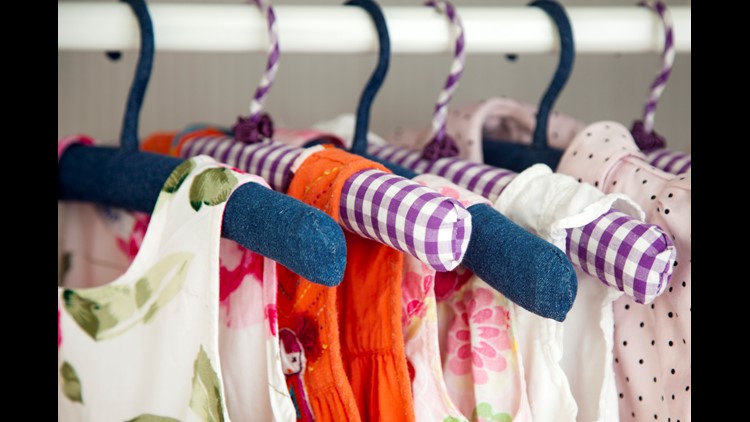School dress codes have been getting their fair share of backlash lately.
Parents and students are frustrated that rules banning bare shoulders, ripped pants and short shorts often target girls over their male classmates.
Just this week, a Texas principal apologized after showing only the school’s female students a dress code video that depicted “bad girls” being punished by a teacher who forced them to repeat, "I will not wear athletic shorts."
Opponents of strict dress codes say punishing students for their clothing is a form of shaming that can result in body-image issues. Not only that, rules are inconsistently enforced.
One San Francisco Bay area school district has a possible solution: Let students wear what they want.
This school year, students at Alameda Unified School District will be allowed to wear everything from tube tops and baggy sweaters to miniskirts and sweatpants.
The district, which has elementary, middle and high schools, adopted the new dress code over the summer, according to the San Francisco Chronicle.
“We want kids and parents and guardians to be deciding what appropriate is,” Rebecca Baumgartner, an English and history teacher at Lincoln Middle School, told The Chronicle.
Baumgartner helped a group of students at her middle school advocate for the changes starting in 2016. School administrators heard the complaints and updated the dress code after a suggested policy from the Oregon chapter of the National Organization for Women. It is being adopted on a trial basis and will be revisited later in the school year after students, parents and teachers weigh in.
“AUSD rejects the idea that certain students’ bodies are distracting and therefore must be monitored and covered,” administrators wrote in a Dress Code FAQs document.
The new dress code is divided into three categories: what students must wear; what they may wear and what they can’t wear.
Students must wear:
- Bottoms
- Tops
- Shoes
- Clothing that covers genitals, buttocks and areolae/nipples with opaque material
Students may wear:
- Hats, including religious headwear
- Hoodie sweatshirts (over head is allowed)
- Fitted pants, including leggings, yoga pants, and “skinny jeans”
- Sweatpants, shorts, skirts, dresses, pants
- Midriff-baring shirts
- Pajamas
- Ripped jeans, as long as underwear is not exposed
- Tank tops, including spaghetti straps, halter tops and “tube” (strapless) tops
- Athletic attire
- Clothing with commercial or athletic logos provided they do not violate the guidelines in the "Cannot Wear" section
- Sun-protective clothing, including but not limited to hats, for outdoor use during the school day
Students cannot wear:
- Violent language or images
- Images or language depicting drugs or alcohol (or any illegal item or activity) or the use of same
- Hate speech, profanity, pornography
- Images and/or language that create a hostile or intimidating environment based on any protected class
- Visible underwear or bathing suits of similar design – visible waistbands or straps on undergarments worn under other clothing are not a violation
- Helmets, hood
“We believe these changes will reduce inequitable and unnecessary discipline and help us maximize learning time,” Steven Fong, AUSD’s Chief Academic Officer, said in a release. “Districts across the country are adopting similar revisions for similar reasons. We are excited to be moving forward with such a student-centered approach.”



